La Clase (The Class), 1996
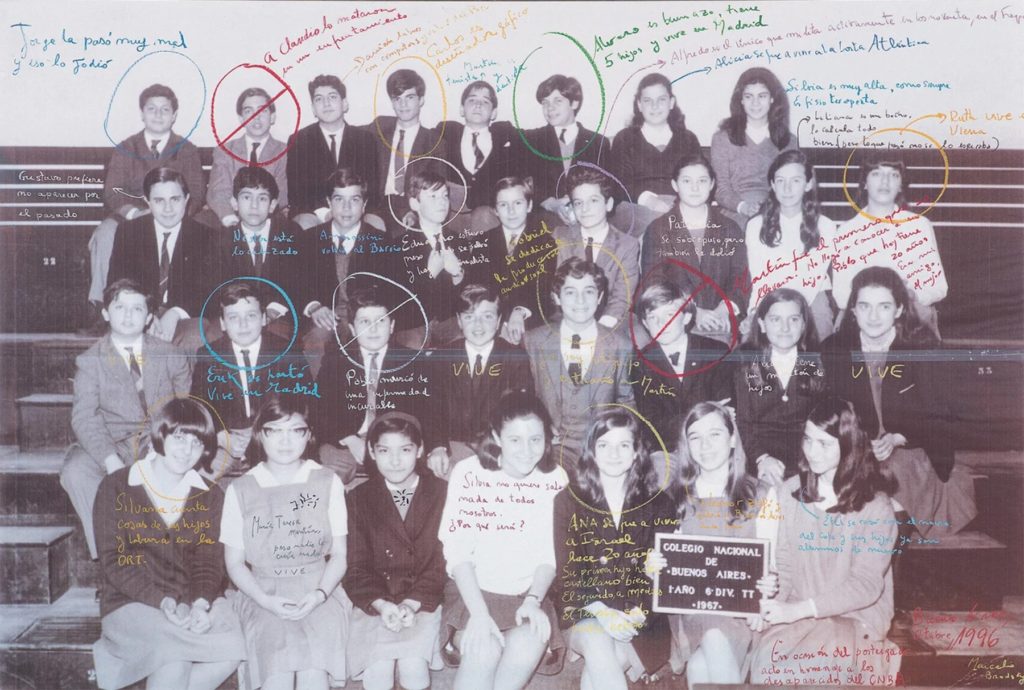
In a bid to understand his identity, Brodsky took on a systematic investigation into his personal photographic archives. 1967 group photograph of his classmates, a deep curiosity about the fate of each person in it aroused. The encounters he had with them in his quest for truth brought forth what is now his most famous work: Buena Memoria (1996).
Being a visual essay dealing with the collective memory of the military dictatorship in Argentina (1976–1983), it bears the emotions and personal experiences of those who lived in that period, and focuses on the trauma that affected his classmates, friends, and family.
In this work, the photograph “Class Photo 1967” is drastically enlarged and meticulously shows the handwritten fate of each classmate—killed, missing, exiled, traumatised during the “Dirty War.”
text by Inês Valle
We Burnt your homes (2021)
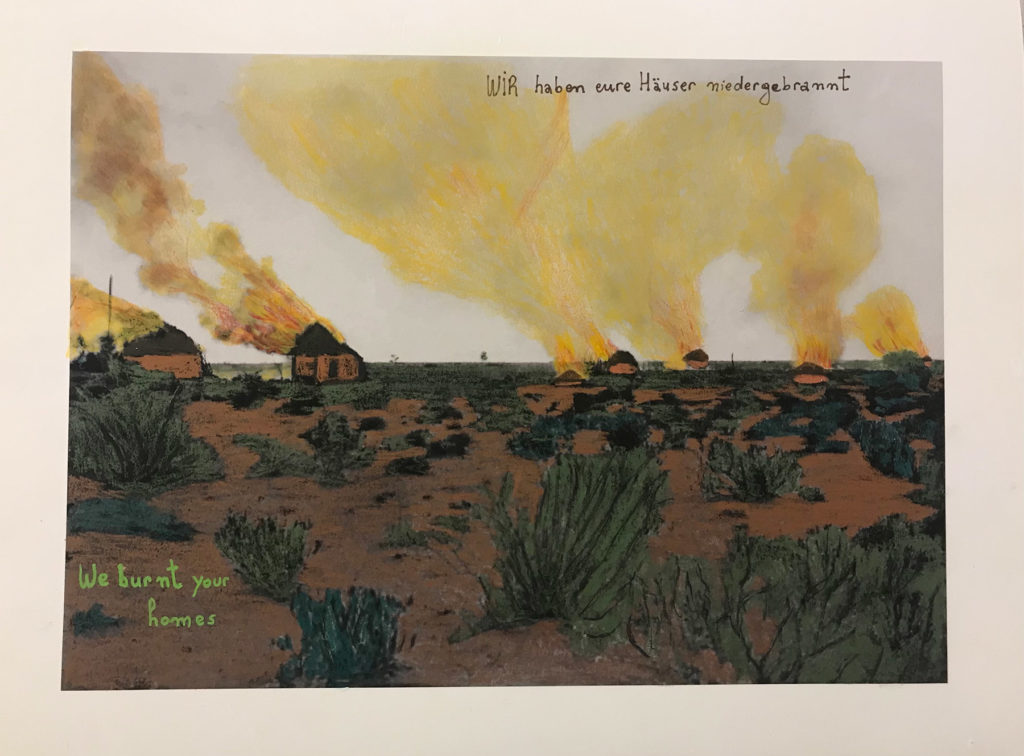
Untitled (2020)
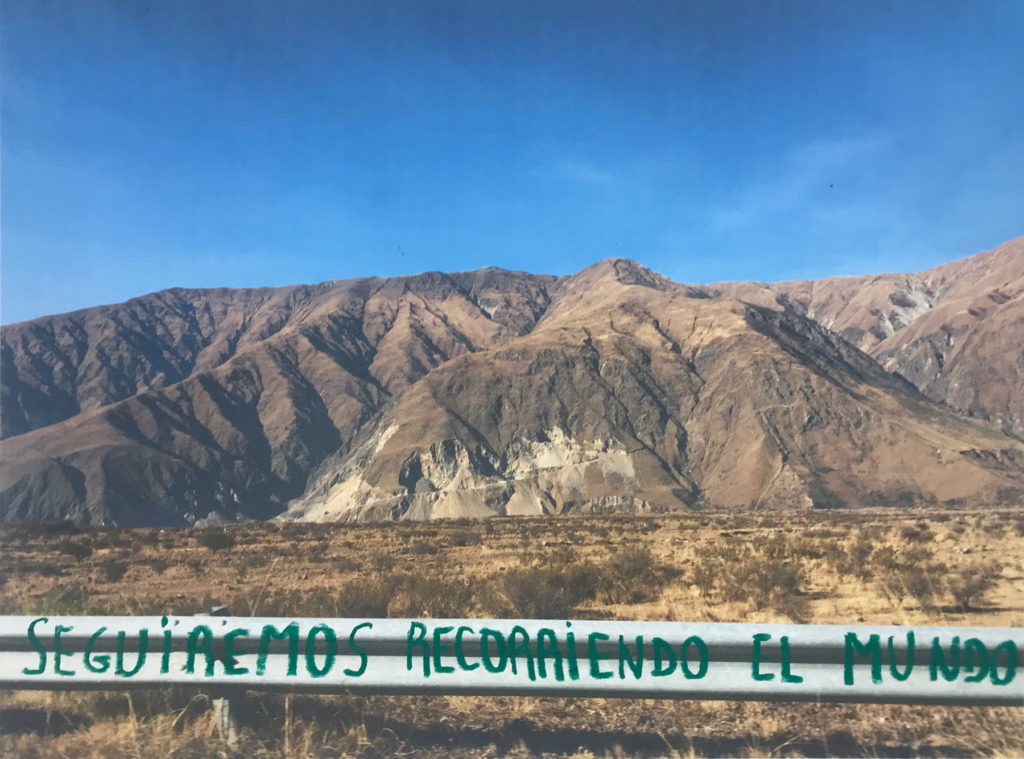
Sculpturing Africa (2021)
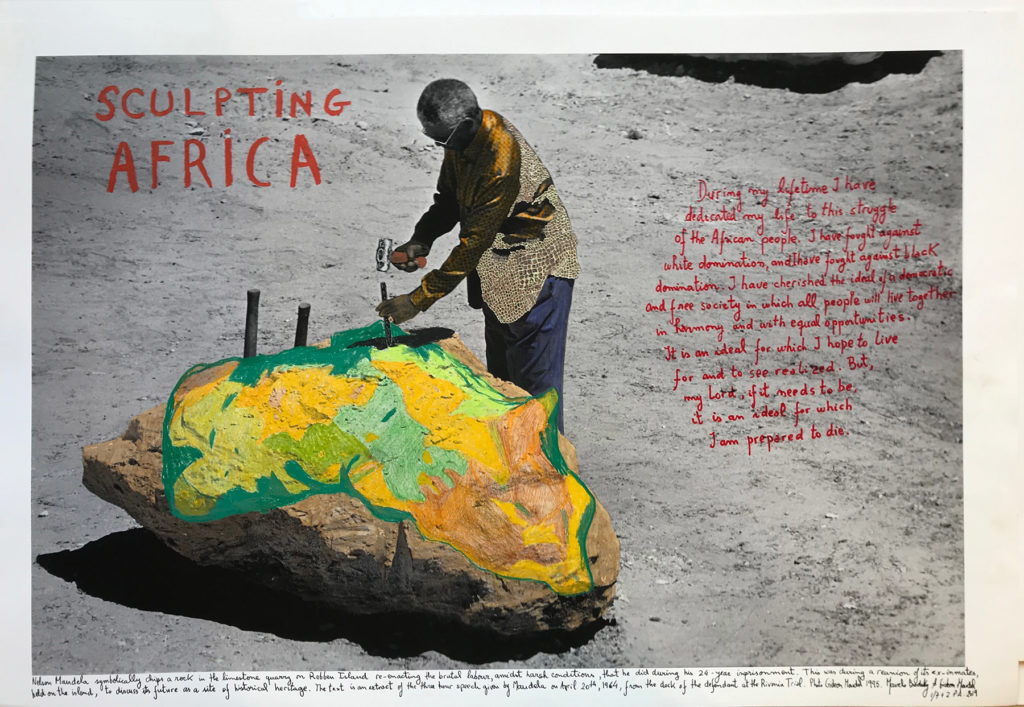
Moçambique, 1974 (2018)
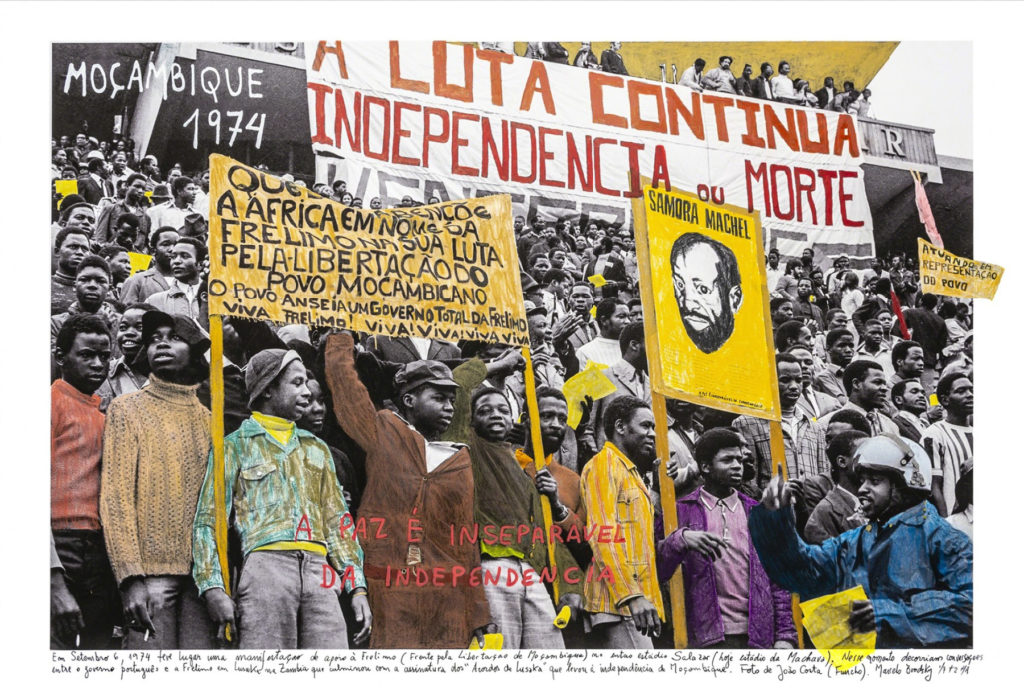
Coimbra, 1969 (2018)
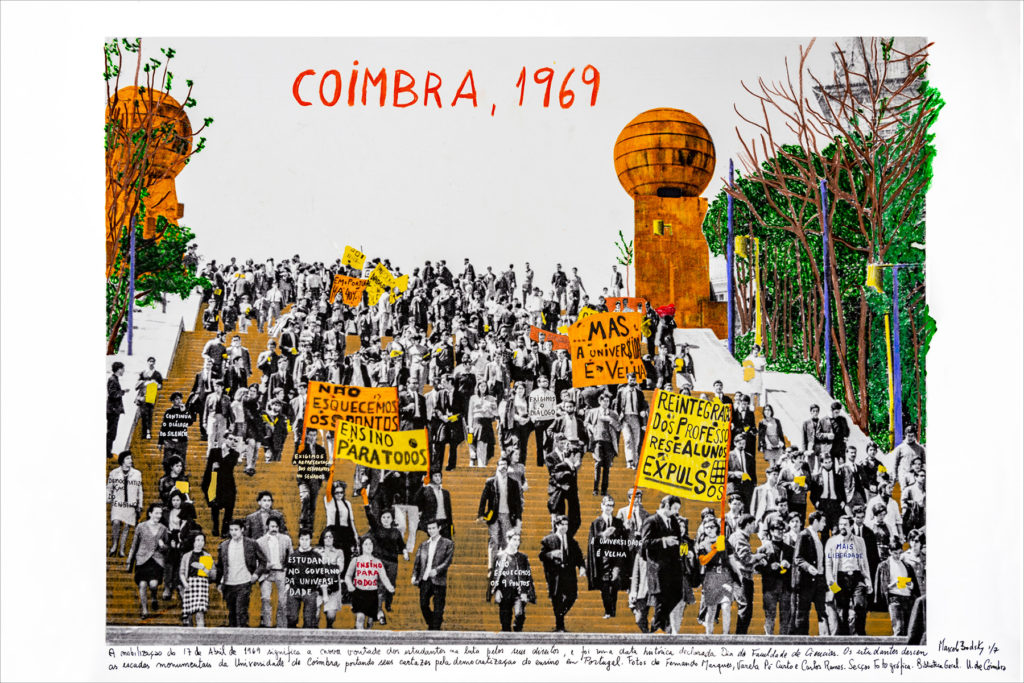
Dakar, Sénégal, 1968 (2017)
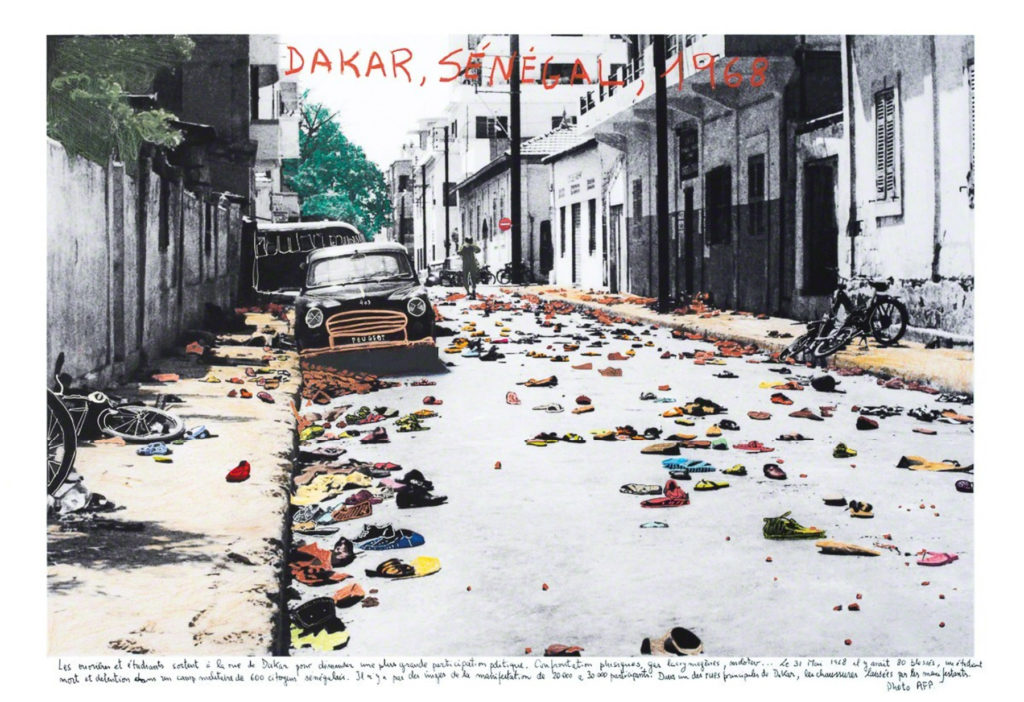
Tiempos Muertos (Dead Season), 2013
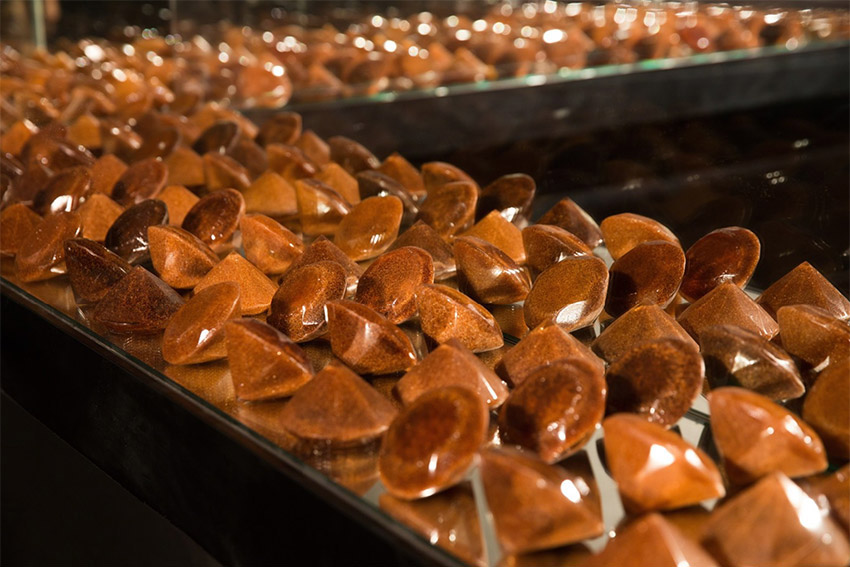
An installation of diamonds cast from sugar from Bacolod, Tiempos Muertos recounts the bittersweet story of sugar in the Philippines. The ‘Sugar City’ Bacolod is historically storied for the ‘sweet life’ of the hacienderos(plantation owners). However, like the sugar that the human body hungers for – which becomes poisonous when consumed in excess – the tale of extremes has left many others in the industry with a bitter aftertaste. Casual labourers undertake most of the backbreaking farm work for as little as S$1 a day. With impending declining sugar prices, the tiempos muertos – the “dead season” of June to September because of the dearth of work – threatens to stay indefinitely. Like blood diamonds, these sugar crystals are a treasure tilled from the earth, gleaned at high human cost.
Exhibited at Singapore Art Museum (SAM). All texts are courtesy of the artist.
Dancing with a dictator, 2018
Wooden carved left pair of shoes worn by the Philippine President’s wife Imelda Marcos on the day her husband was sworn as the new commander in chief of the Philippines. The Marcos regime would span 20 years.
All texts are courtesy of the artist.
Backbone (Columna Vertebral), 2015
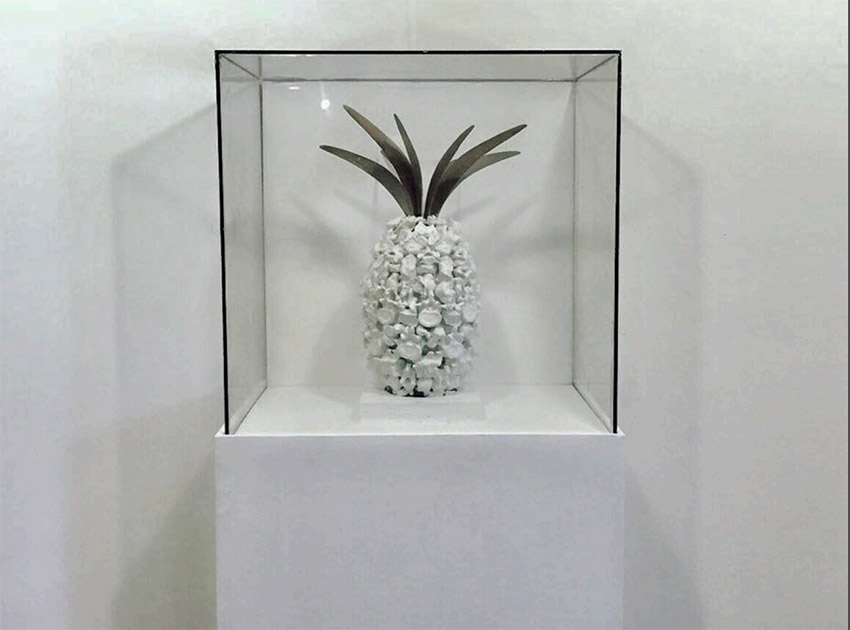
The ordeals of the Filipina worker working in pineapple plantations in the southern part of the Philippines and, timely, coincides with the recent and publicized ordeal of factory workers in a substandard-equipped factory that caught fire and claimed the lives of many. In the said working environments, the woman is compared as a “cow” or “kalabaw,” physiologically bending her back to crouch at the soil beneath her feet, or working a machine to do patchwork all day long. The farmhand works under the scorching heat of the sun; the factory worker bears the humidity of the confines of a workplace warehouse.
All texts are courtesy of the artist.
